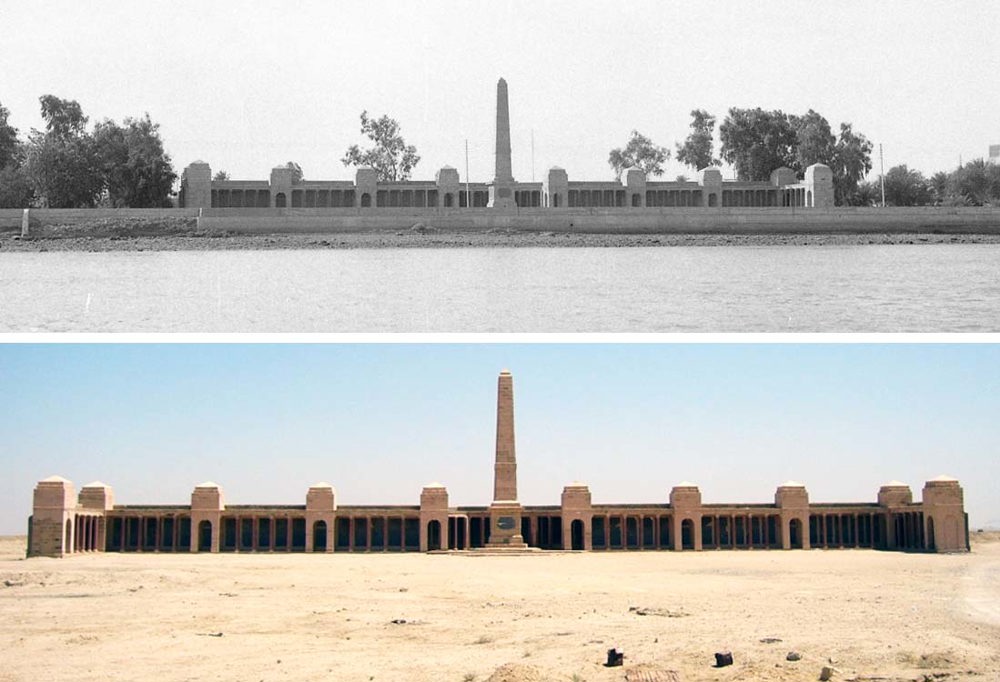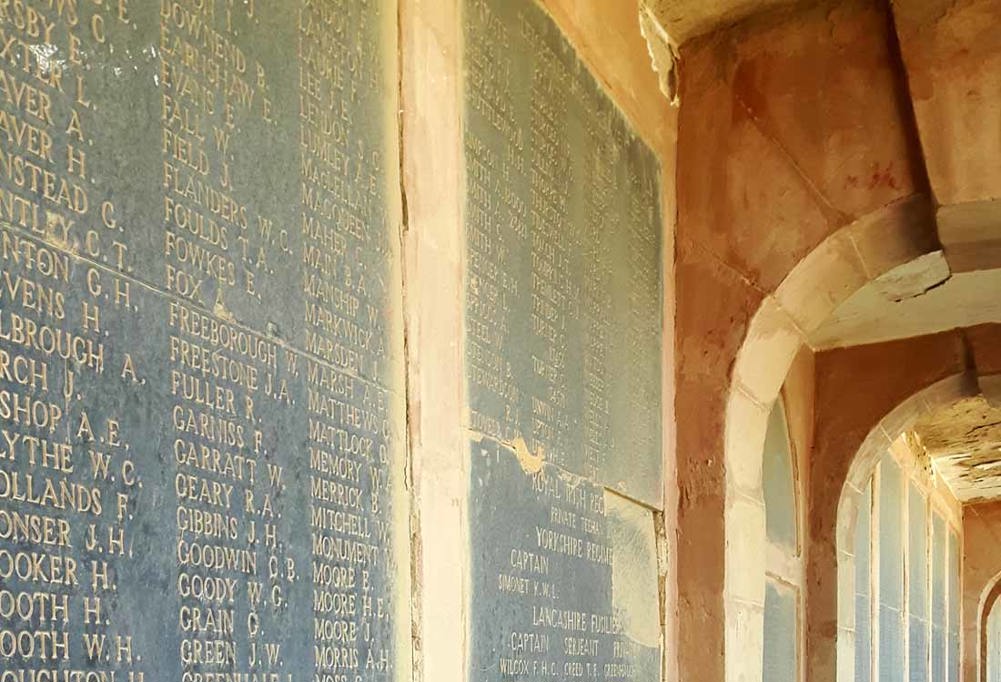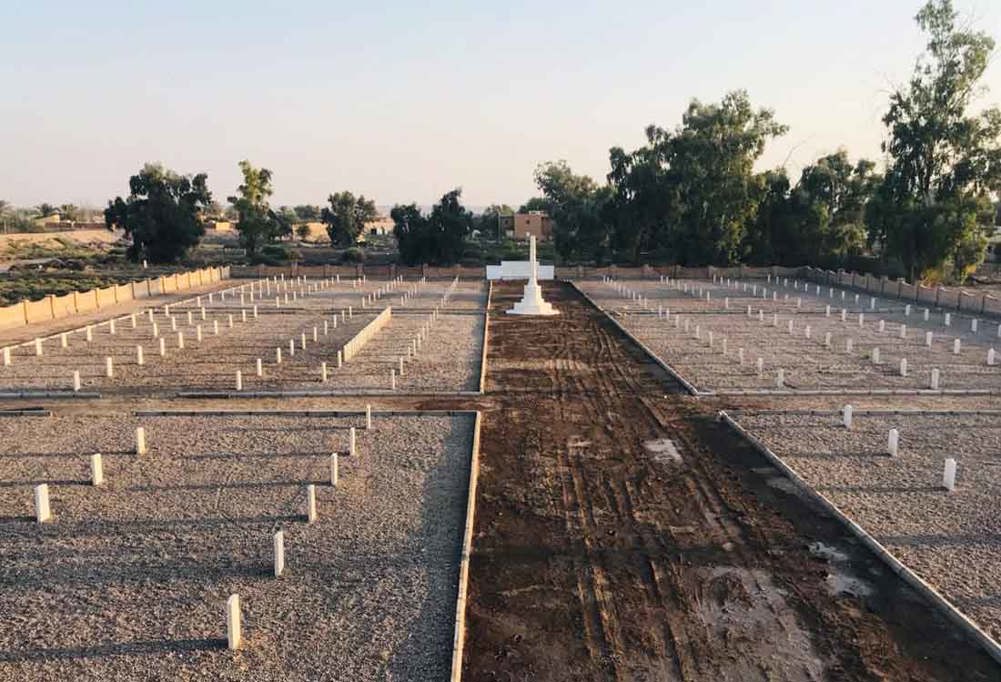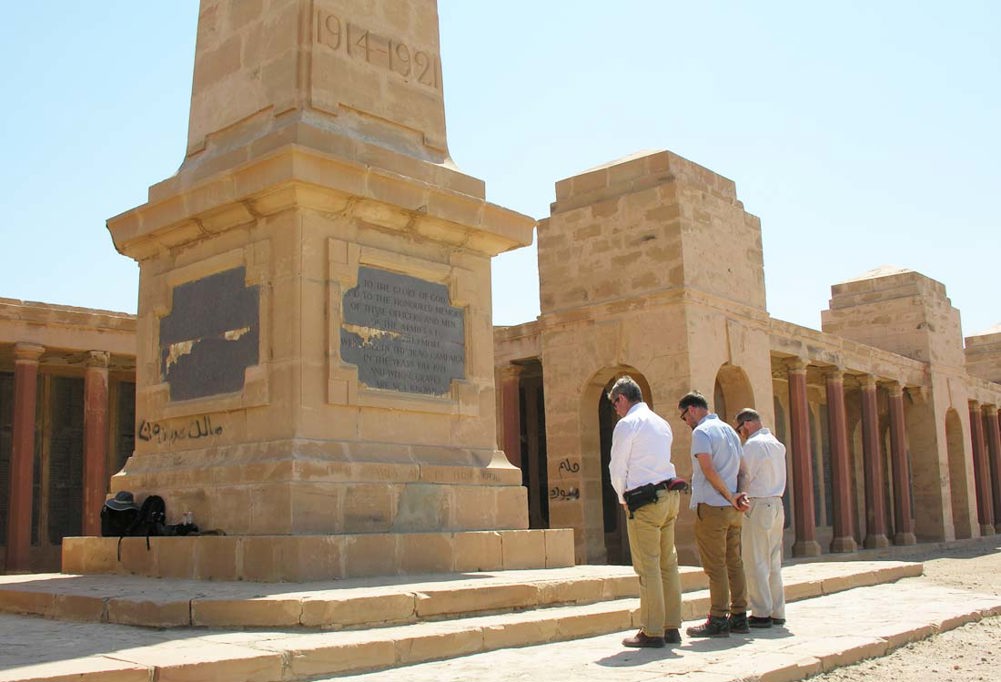Basra Memorial
- Country Iraq
- Total identified casualties 40633 Find these casualties
- Identified casualties from First World War
- GPS Coordinates Latitude: 30.41163, Longitude: 47.54582
Roll of Honour
A two volume Roll of Honour listing all casualties buried and commemorated in Iraq has been produced and are on display at the Commission's Head Office in Maidenhead. Digital versions of these Rolls of Honour have been produced and are available to view online.
View the digital Rolls of HonourHistorical Note
 This combined British-Indian memorial to the missing, unveiled in 1929, includes on its panels the names of all British personnel and Indian officers. The Indian non-commissioned officers and other ranks are commemorated numerically, with their names included in a memorial register. Owing to difficulties accessing the country since the first Gulf War, the CWGC has not yet been able to correct the panels on this memorial.
This combined British-Indian memorial to the missing, unveiled in 1929, includes on its panels the names of all British personnel and Indian officers. The Indian non-commissioned officers and other ranks are commemorated numerically, with their names included in a memorial register. Owing to difficulties accessing the country since the first Gulf War, the CWGC has not yet been able to correct the panels on this memorial.
You can find more information about historical inequalities in commemoration in our Special Committee’s report.
Read the Non-Commemoration report
>
PLEASE FOLLOW THE FCDO RECOMMENDATIONS BEFORE VISITING THIS SITE
Use the link below to read the latest update on the status of this site:
Cautious return to Iraq

BASRA WAR MEMORIAL
Location: Habbaniya, Iraq Language: Arabic/Kurdish Altitude: 50m Rainfall: 133mm
Temperature: 8°c - 44°c Biggest challenge: Security concerns
The challenge CWGC faces in Iraq is huge – it’s the equivalent of building a new Tyne Cot Memorial in the middle of the desert in a country where safe access can’t always be guaranteed. And that’s just looking at solving one of the 19 locations in the country we’re responsible for.
Most have been damaged or deteriorated due to recent conflicts. Sadly, Iraq is no stranger to war. During the First World War, then known as Mesopotamia, it was the scene of the Empire’s largest operations outside of Europe and saw its worst defeat at the Siege of Kut.
Today Iraqis live with the fallout of more recent upheavals. The Commission has had to stop and start here on many occasions. In 1990 we formally withdrew. It was simply unsafe.
In our absence, many sites have deteriorated. The soil in the region has such high levels of salt that, without preventative work, it seeps into headstones making them so brittle they can be virtually crumbled by hand.

The Basra Memorial on its original site (above) and new site (below).
The largest memorial in the country is the Basra War Memorial. It originally stood at the side of the Shatt al-Arab River on the edge of the city but was moved in the late 1990s by Saddam Hussein’s regime into the desert.
After decades without regular maintenance, the war memorial is showing signs of age. However, it’s not just repair works that are needed here – it’s missing 30,000 names, too, the equivalent of the Tyne Cot Memorial.

Damage to the name panels and structure on the Basra Memorial.
When first unveiled in 1929 the names of most of the men of the Indian Army who it commemorates were not accurate. War records at the time hadn’t been properly compiled and the Commission could only be provided with the names of Indian officers, and British officers and men.
Since then an accurate list of the names has since been compiled and all lie in the CWGC’s Iraq Roll of Honour, on display in the UK, waiting for a time when conditions on the ground allow a more permanent solution.
However, there is hope. Step by step, progress is being made in Iraq. In 2012, during a gap in hostilities, Kut War Cemetery was completely renovated. Before and after images are a testament to success. In 2019, the most recent project has also succeeded.

Renovation work begins at Habbaniya War Cemetery.

View of the renovated cemetery with nearly 300 brand-new headstones installed by CWGC.
Within the walls of Habbaniya, a former RAF base that’s now operated by the Iraqi Army, the war cemetery was in almost complete disrepair. Now, nearly 300 brand new headstones have been installed and the entire site renovated, only made possible by finding a trusted local contractor.
The Commission has to play the long game at times. When your task lasts forever, you never know what progress the future might bring.

CWGC staff pay their respects on an inspection trip to assess the condition of the Basra Memorial in 2017.
Location information
Until 1997 the Basra Memorial was located on the main quay of the naval dockyard at Maqil, on the west bank of the Shatt-al-Arab, about 8 kilometres north of Basra.
Because of the sensitivity of the site, the Memorial was moved by presidential decree. The move, carried out by the authorities in Iraq, involved a considerable amount of manpower, transport costs and sheer engineering on their part, and the Memorial has been re-erected in its entirety.
The Basra Memorial is now located 32 kilometres along the road to Nasiriyah, in the middle of what was a major battleground during the first Gulf War.
Casualties are listed under the regiment they served with in rank order. The Panel Numbers quoted refer to the initial panel dedicated to the Regiment. If a further panel is quoted, this refers to the Prisoners of War panels.
Visiting information
NOTE: Whilst the current climate of political instability persists it is extremely challenging for the Commission to manage or maintain its cemeteries and memorials located within Iraq. Alternative arrangements for commemoration have therefore been implemented and a two volume Roll of Honour listing all casualties buried and commemorated in Iraq has been produced. These volumes are on display at the Commission's Head Office in Maidenhead and are available for the public to view.
The Commission continues to monitor the situation in Iraq and once the political climate has improved to an acceptable level the Commission will commence a major rehabilitation project for its cemeteries and commemorations.
Before considering a visit to Iraq the Commission strongly recommends that you check the advice given by the Foreign & Commonwealth Office on the travel section of their website:
www.fco.gov.uk/en/travel-and-living-abroad/travel-advice-by-country/
History information
The Basra Memorial commemorates more than 40,500 members of the Commonwealth forces who died in the operations in Mesopotamia from the Autumn of 1914 to the end of August 1921 and whose graves are not known. The memorial was designed by Edward Warren and unveiled by Sir Gilbert Clayton on the 27th March 1929.


